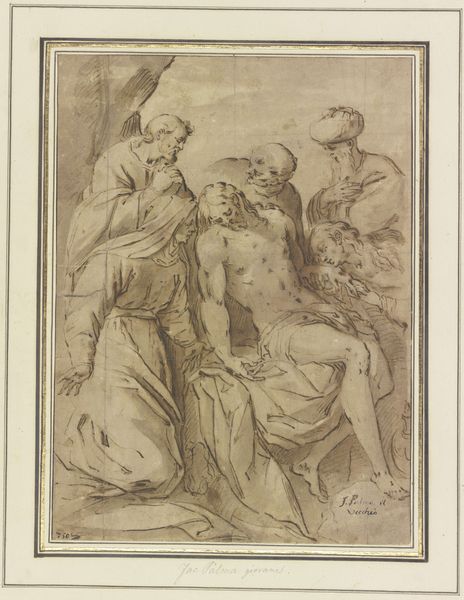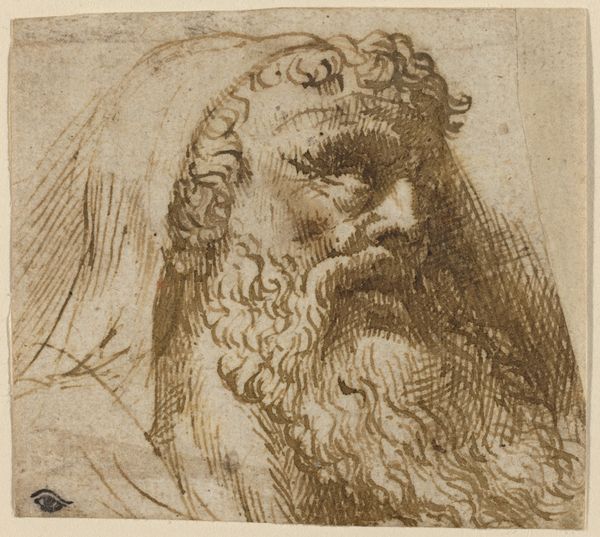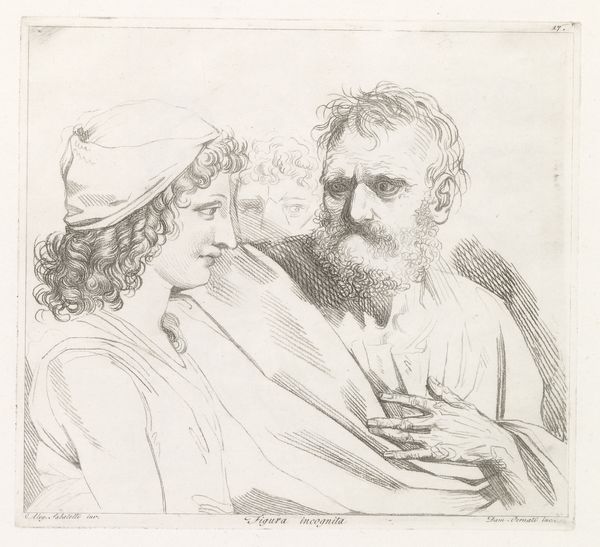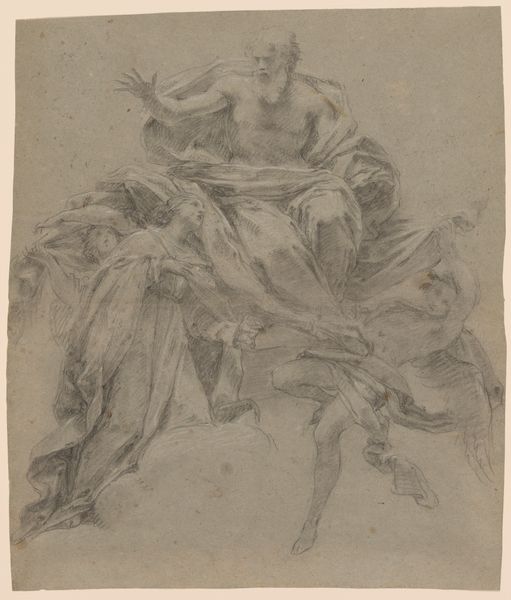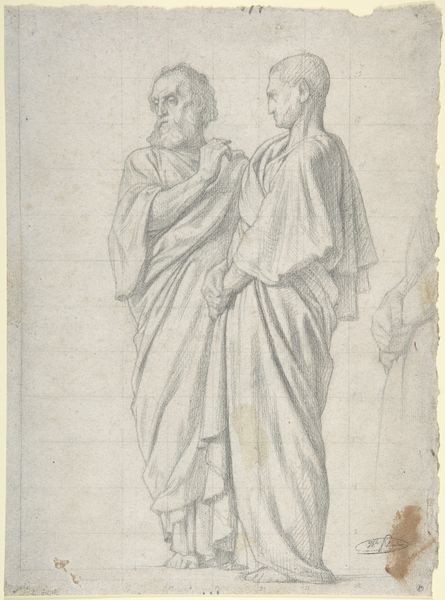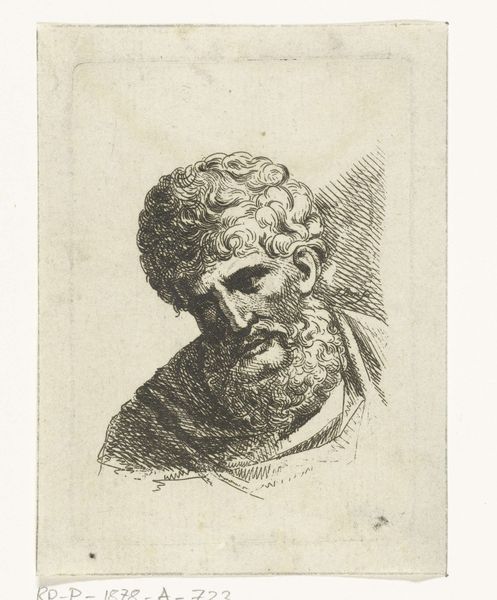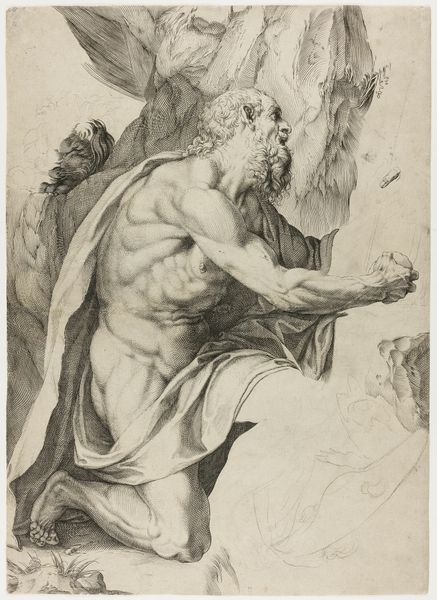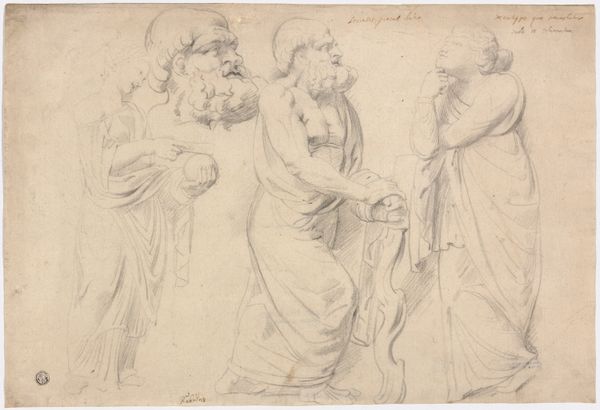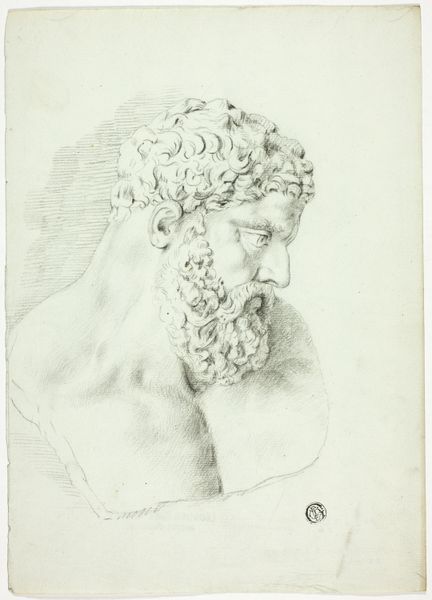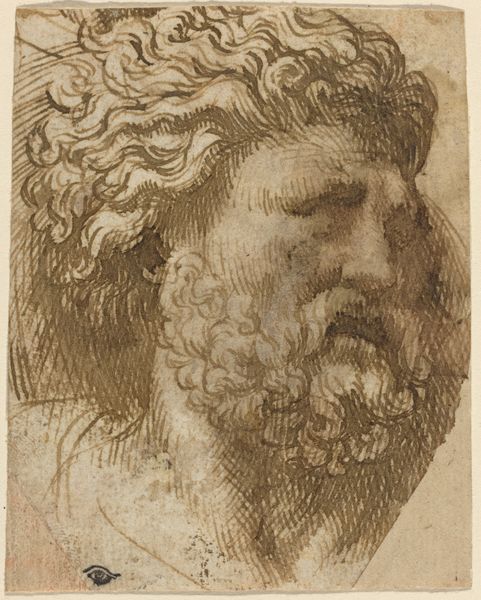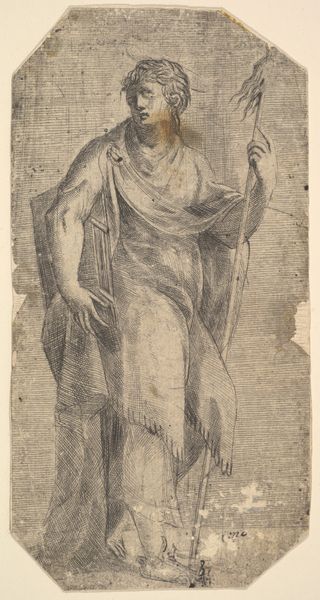
drawing
#
portrait
#
drawing
#
comic strip sketch
#
neoclacissism
#
facial expression drawing
#
pencil sketch
#
figuration
#
personal sketchbook
#
idea generation sketch
#
sketchwork
#
pen-ink sketch
#
portrait drawing
#
pencil work
#
history-painting
#
storyboard and sketchbook work
Dimensions: height 225 mm, width 189 mm
Copyright: Rijks Museum: Open Domain
Editor: So, this drawing, "Man met baard, naar rechts" or "Man with beard, facing right", made in 1804 by Damiano Pernati. It looks like a preliminary sketch, probably using pen or pencil. I find its bareness quite intriguing; there's a lack of context around the characters. How would you interpret its historical significance, considering its sparse qualities? Curator: This image immediately speaks to the era of Neoclassicism, with its emphasis on line and form echoing classical antiquity. Notice how Pernati uses this spareness, this reduction of detail, to focus instead on physiognomy. How does that rendering shape our view of this "man with a beard?" Consider how such drawings served as preparatory works. Editor: I hadn't considered its use as a preparatory drawing. I guess I’m caught up on the sort of severe expressions and poses that feel charged but strangely disconnected. I am curious though, how does this emphasis on the head as subject fit into the socio-political climate of the early 19th century? Curator: The focus on the individual head is indeed vital. It suggests a connection to both the Enlightenment's emphasis on individual reason, and the later interest during the French Revolution, where figures of leadership (or resistance) are elevated. What social class do you think this subject came from, given his attire, in the context of this work? Editor: Possibly the elite, judging by his garment that is similar to a toga. Seeing how you explained its significance, I now find it incredibly moving to know how individual identity was important to artists. Curator: Indeed, we have a brief glimpse of Pernati's approach, of how historical and political thought was explored in preliminary drawings.
Comments
No comments
Be the first to comment and join the conversation on the ultimate creative platform.

